The shutdown hit the Florida Keys hard. What will it take to get back to business?
Tourism is the lifeblood of the Florida Keys. It pumps up jobs and tax dollars. Supports fishing, hotels, restaurants.
So with more than five million people who visit Monroe County in a normal year, the island chain typically has the lowest unemployment rate in the state. But with tourists banned from entering the Keys since late March because of the novel coronavirus pandemic, Monroe County’s unemployment rate shot up to the second highest in Florida, a whopping 17.5 percent.
More than 8,207 people out of a workforce of 46,816 are out of a job, according to the Florida Department of Economic Opportunity. Only Osceola County, where most visitors to theme parks like Disney World, Universal Studios and SeaWorld stay in hotels and other lodgings, has a higher rate, more than 20 percent, according to the agency.
This time last year, the Keys’ unemployment rate was below 2 percent.
Now, Monroe leaders say, it’s time to get back to business.
Keys leaders hope the first step of the economic recovery from the COVID-19 crisis will begin Monday, when the checkpoints on the 18 Mile Stretch of U.S. 1 and County Road 905 meant to keep out visitors are taken down.
Listen to today's top stories from the Miami Herald:
What remains to be seen is if or when tourists will return in numbers high enough to put people back to work in a meaningful way, and also whether enough of the workforce stayed in the Keys to handle the returning tourists.
“We know we have to get back to work with what is to be our new normal,” said Mike Forster, mayor of the Village of Islamorada and a longtime restaurant owner. “But that doesn’t mean that we all are not hesitant in feeling a vulnerability of our health possibly being compromised.”
Keys residents are divided over whether this is the right time to reopen to tourists. On one side, business owners and unemployed workers say it’s time to welcome back the people who pay the bills.
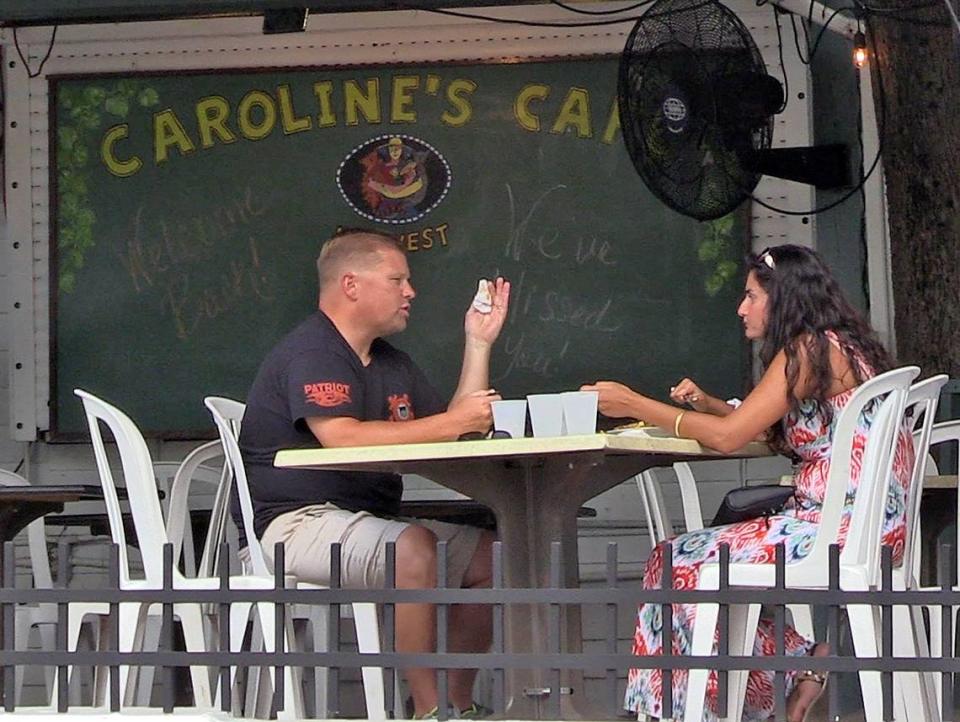
On the other side, people who say it’s not worth the money to invite in those who have possibly been exposed to the coronavirus elsewhere.
Others are conflicted over the reopening, with the pandemic still a deadly threat.
But the Keys are hurting when it comes to money.
Food lines in the Keys
Long lines have formed over the past two months as people drove or walked up to food distributions. Thousands of hot meals have been given away in Key West alone.
“This pandemic has hit hard and runs deep,” said Scott Atwell, executive vice president and CEO of the Key West Chamber of Commerce.
“There were people in those lines who never thought they’d be in a food line,” Atwell said. “Monday is a little bit of light at the end of the tunnel but not stepping out into the broad sunshine like we were in March. The businesses that have survived are optimistic they can hang on until it rebounds.”
It’s not clear how many of the Keys’ roughly 74,000 residents decided to stick around during the pandemic. What is clear is that for those who have stayed, it hasn’t been easy. Many are having trouble putting food on the table, state data reveals.
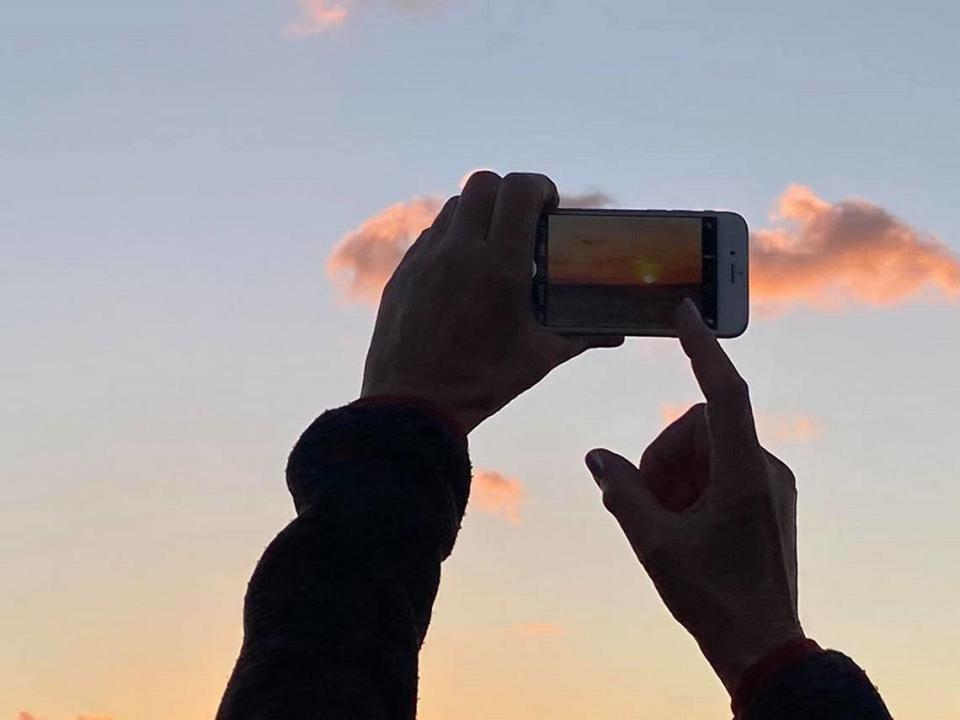
The year-over-year increase in food stamp beneficiaries from April 2019 to April 2020 jumped by more than 200 percent, the DEO reported.
Stephanie Kaple, executive director of the Florida Keys Outreach Coalition, said her agency’s rent assistance program and food pantry have been tapped out during the shutdown.
“They’ve both been tasked at a far higher rate than even after Hurricane Irma,” Kaple said. “There’s still a long road to people recovering from the COVID-19 crisis.”
The Keys have always been a tough place to make a living for those without a trust fund or wealth, with exorbitant rents awaiting workers in its most populous city, Key West.
According to the United Way of Collier and the Keys, about 40 percent of Keys residents before COVID-19 were living paycheck to paycheck, a crisis away from falling further into poverty or homelessness.
“The economic devastation of the pandemic was this crisis for thousands of Keys residents,” said Leah Stockton, Keys area president for the agency. “The widespread and ongoing need we are seeing throughout the community is unlike anything we have ever seen, even after Hurricane Irma.”
Kerry Foote, pastor of Burton United Methodist Church in Tavernier, runs a food pantry that feeds local people in need. Since the tourism shutdown, he said attendance has more than doubled, and most of the new clients are people who never needed help feeding their families before.
“The shutdown has had a drastic effect both physically and emotionally,” Foote said. “The vast majority of people that come through our food pantry are very thankful, however, they are not used to having to receive food help.”
That’s because in normal times, the Keys have had plenty of service industry jobs filled by both locals and people in neighboring Miami-Dade County. The Keys economy is also transient in nature, with high turnover. So those looking for work usually don’t have a hard time finding it, even though that often meant people working more than one job.
Foote’s pantry has been asking recipients to fill out a survey during the crisis, with one of the main questions being, “Did you lose your job due to COVID-19,” and if yes, what type of work was it.
“Over half the people who answer ‘yes’ work in some type of service industry,” he said.
Keys recovery
The situation is not unlike the aftermath of a hurricane, but much worse in the long- and short-term. With a storm, there’s a beginning and an end, and depending on the damage, residents, businesses and local governments get on with the recovery process within days and weeks of the system passing.
Even so, the Keys are not fully recovered from Hurricane Irma, which damaged or destroyed homes, restaurants and hotels when it crossed the lower end of the island chain as a Category 4 storm in September 2017.
The Keys now face an unprecedented situation of preparing for a new storm season while trying to begin to recover from the economic devastation caused by the pandemic.
“The road to recovery is going to be much harder than after Irma,” said Elizabeth Moscynski, president of the Key Largo Chamber of Commerce. “However, I am confident with all the measures that are in place, the Keys will recover and are going to be one of the best places to vacation.”
That will clear the way for tourists to once again enjoy Keys attractions and amenities. Hotels, motels and vacation rentals can reopen at 50 percent capacity.
In Keys hotels
Hotels aren’t exactly expecting hordes of people this week, especially not on Monday’s reopening day. But they preparing with sanitizing protocols and marked floors to create social distancing.
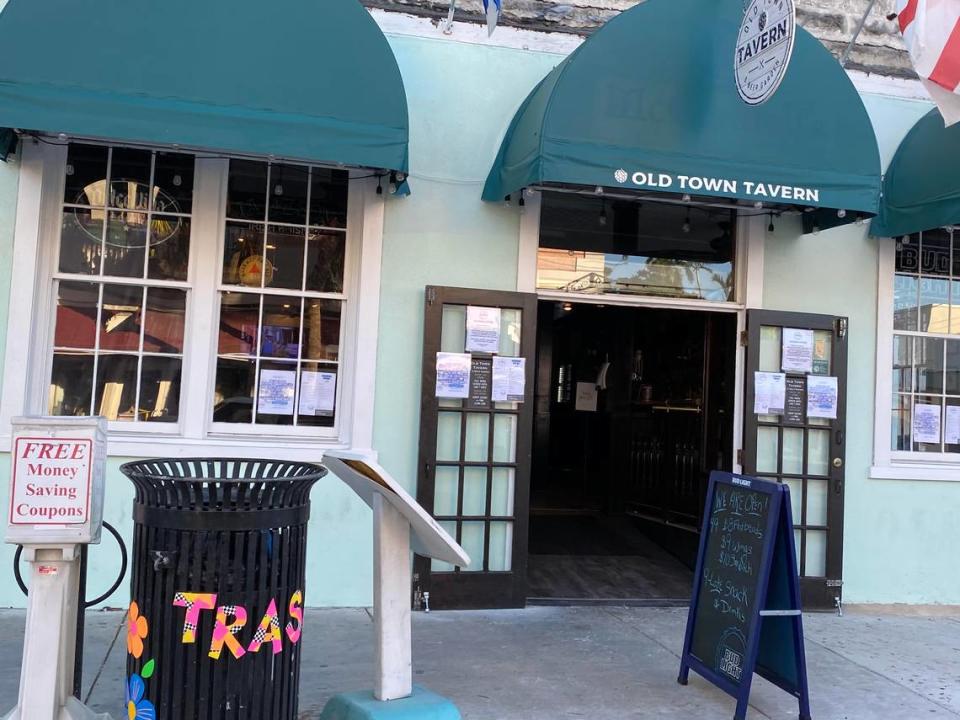
“Monday has never been a big day,” said Jodi Weinhofer, president of the Lodging Association of the Florida Keys and Key West. “Bookings have now started to pick up a little bit. I’m not talking big but they’re starting to get a few more reservations.”
Hotels had furloughed their staff and aren’t likely putting everyone back to work, with a 50 percent occupancy recommendation from the county and other limitations.
“They’re probably bringing back a portion of their staff,” Weinhofer said. “Some hotels are not instantly opening up their restaurants. They want to get the hotel side of it correct first.”
In Keys restaurants
Restaurants may also open under the same restrictions.
Outdoor seating is not limited to 50 percent capacity, however, tables must be spaced six feet apart. Like the rest of the state, bars and nightclubs must remain closed until further notice, according to Gov. Ron DeSantis’ executive order.
“We’re really looking forward to opening on June 1,” said Ann Jonas, who owns Sarabeth’s restaurant in Key West. “It’s been too long.”
Sarabeth’s closed March 23 and later tried to do takeout during special hours. But it kept its dining room closed even when allowed by the state to seat local customers. Starting Monday, the restaurant will be open from 11 to 6 p.m., for takeout only, with a special menu.
An eye on protection
Area businesses are eager to get back in the game, but they are aware that they must tread carefully since COVID-19 is still very much a reality and economic and health concerns will have to have equal consideration. Unlike neighboring Miami-Dade County, the Keys kept COVID-19 its cases relatively low, under 110, with four deaths. Authorities attribute much of the success to the checkpoints — keeping visitors out.
“It’s been very effective to keep our community safe but its time has come,” Monroe County Sheriff Rick Ramsay said in a video statement. “We’re still proud to say our sheriff’s office is COVID-free. No staff and no inmates have tested positive for COVID-19.”
Ramsay reminded people to lock their doors and secure their valuables as the Keys reopens to visitors.
Now that the checkpoints are coming down, positive cases may increase, but officials and business owners hope the precautions put in place, including wearing masks indoors, will keep them to a minimum.
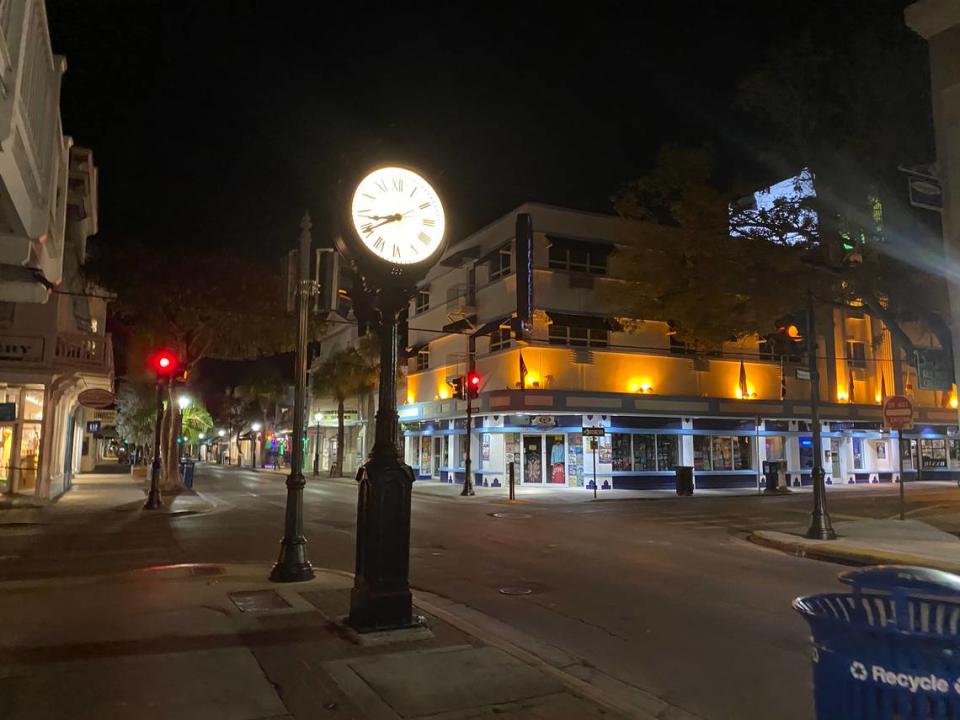
“Now the task at hand is getting employees and procedures in place. Safety has to be a major concern. We are opening, but the virus is not gone,” said Judy Hull, director of the Islamorada Chamber of Commerce. “We have to make sure we have the right protective measures in place so we can live safely with it among us.”
The city of Key West last week sent out a printable sign to business owners that reads, “Mask up, Key West. No shirt, no shoes no mask, no entry.”
In small print below the slogan, the sign says violating emergency orders — such as refusal to wear a mask inside a store — can result in 60 days in jail or a $500 fine.
“We are here to help you and your customers do the right things,” Key West Mayor Teri Johnston wrote in a letter to businesses dated May 28. ““We are serious about protecting Key West.”
Keys attractions
While the Keys were shut down, much of the focus of discussion for opening back up was on lodgings and restaurants. But the island chain is full of other attractions popular with both tourists and locals that have had to make due in creative ways during the crisis.
The Dolphin Research Center is a marine mammal attraction on Grassy Key, just north of the Middle Keys city of Marathon. During the lockdown, dolphins and staff put on daily presentations that were streamed on Facebook Live. Since the center is a nonprofit, the shows were a useful way to raise money using Facebook’s “Donate” button, which helped keep workers on the payroll.
Mary Stella, the dolphins center’s media and marketing director, said employees are excited to have visitors back at the park this week. She said trainers have also been able to tell the dolphins miss having crowds to show off for.
“I’m sure people will be ready. I know we are,” Stella said.
She said the layout of the center is already conducive to social distancing, since, unlike other aquariums and marine mammal parks, there is no stadium-type seating. Workers have placed benches six feet apart, and the floating platforms where visitors can feed the mammals were designed so people can stand on either side, creating enough space between guests and staff.
“We have thought long and hard on how to do this,” Stella said.
What tourists will return?
The summer is typically the off-season in the Keys, but the area usually stays busy thanks to tourists from Europe. Tourism officials aren’t counting on the overseas market this summer, however, and are hoping more people will drive down from other parts of the state and neighboring states like Georgia to make the Keys part of their summer vacation plans.
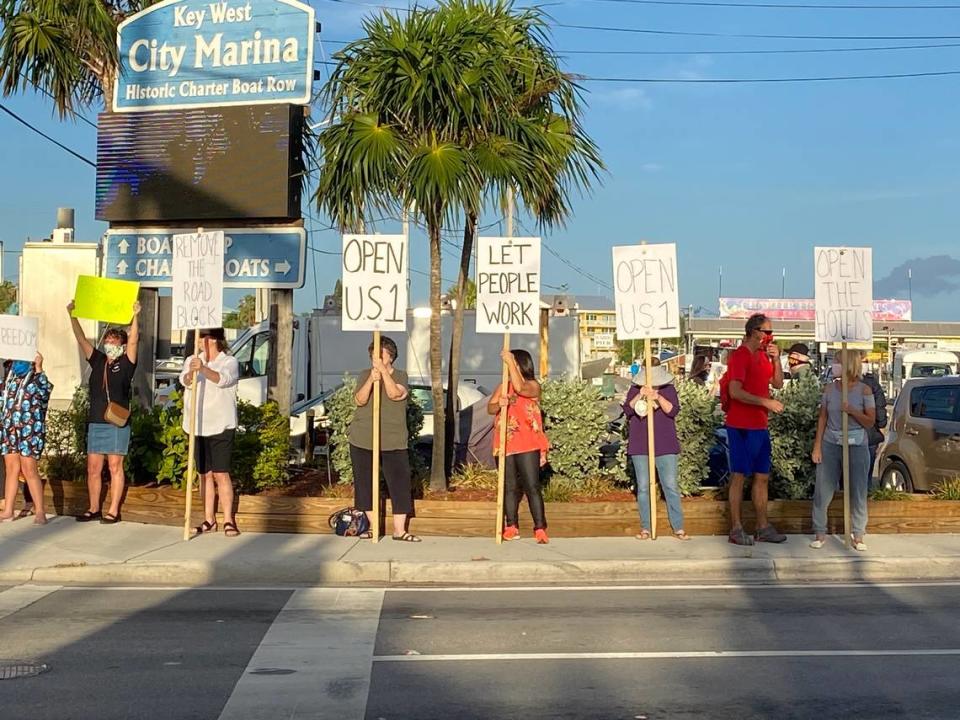
While Disney, SeaWorld and Universal Studios recently announced their summer reopening plans, many people may be wary of exposing themselves and their families to the large crowds associated with the Orlando theme parks, said Moscynki, of the Key Largo Chamber of Commerce.
“I think we will be busy, as long as consumer confidence is in place,” she said. “Folks may not have as much assurance with going to Disney. Plus, we are more affordable than a trip to Disney.”
Moscynski and other tourism leaders are also banking on more people willing to make long car trips as opposed to hopping on a plane and possibly exposing themselves and their families to the coronavirus.
“With the in-state visitors, the Keys are an easy drive,” she said. “However, we have had people as far away as Texas who are willing to drive to the Florida Keys.”
Kevin Theriault, executive director of the Key West Business Guild, said there is a combined goal of recovering economically and keeping locals and visitors safe
“It will take quite some time to recover from the loss,” Theriault said. “But, we are a resilient community and we will recover.”
The Keys are reopening and you’re planning a visit. Here’s what you can and can’t do
Miami Herald staff writer Bianca Padro Ocasio contributed to this report.

